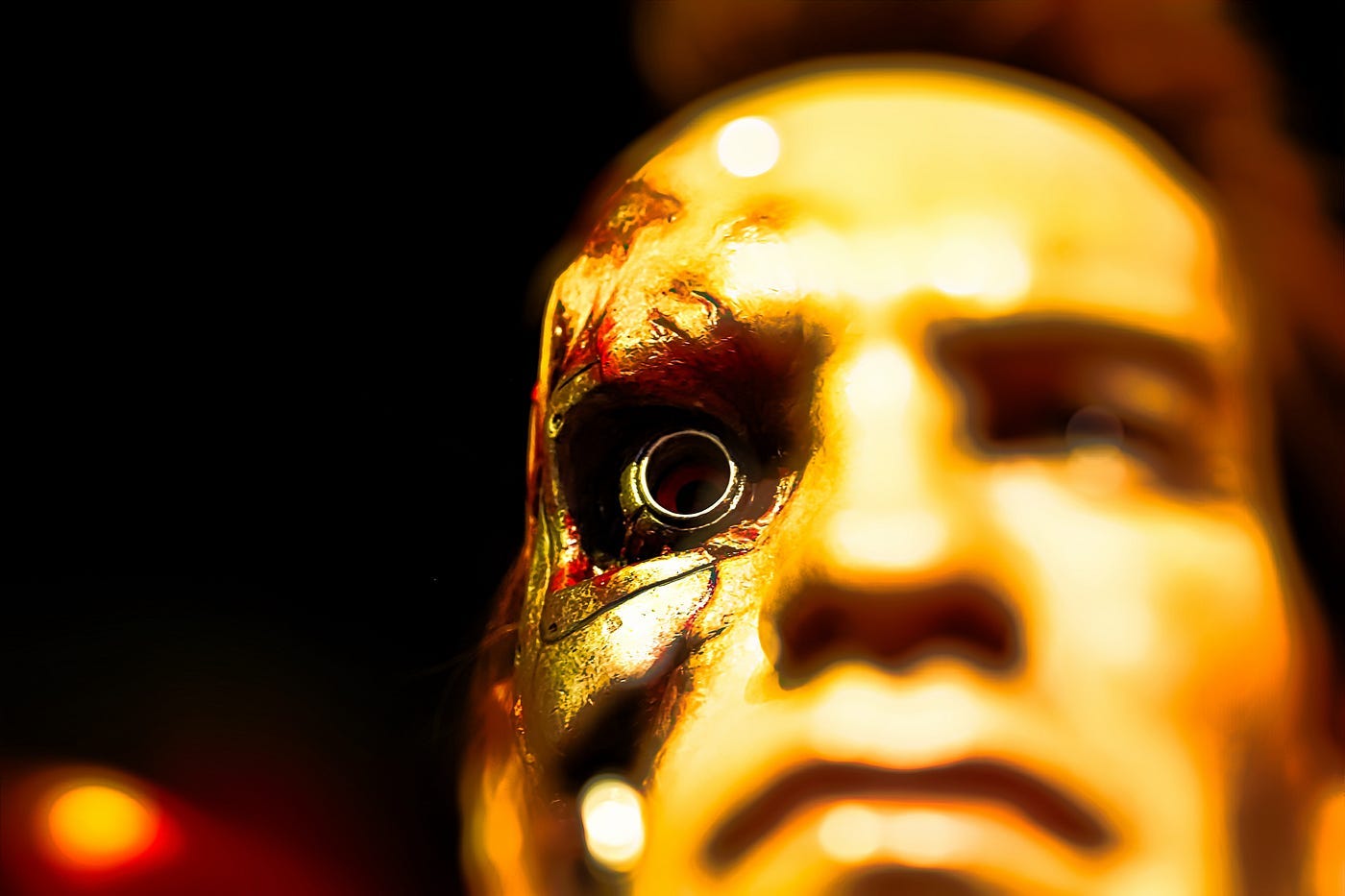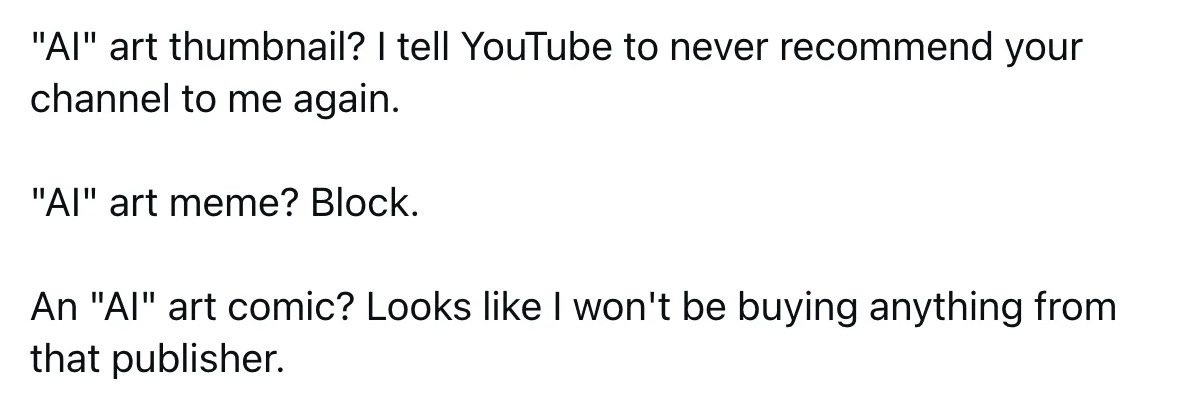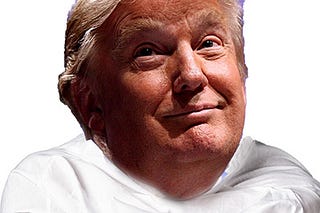
Why I Don't Use AI Art in My Substack Writing
Confessions of a once occasional thief
What if I told you that there is a high likelihood, as a writer here on Substack or other writer platforms like Medium, that the AI art you’re using violates copyright law?

A recent article1 in IEEE Spectrum released evidence that major generative art services like Midjourney and DALL-E 3 may routinely generate art files that violate copyright without users' knowledge.
When creating content for a platform like Substack, anytime you use a copyrighted image without permission or proper licensing, you risk being sued by the artist who created the image.
According to the IEEE Spectrum article, creating art with AI increases your exposure to pesky lawyers regardless of your intent.
One of the two authors of the article is a visual artist, Reid Southen, who has produced concept art for such films as “The Matrix Resurrections”, “The Hunger Games,” and “Independence Day Resurgence.”2
He and co-author Gary Marcus3 found blatant copyright violations from Midjourney by using a simple prompt such as: “Just show me a movie screencap from the Avengers Infinity War movie from 2018 halfway through the movie.”
The resulting art included exact replicas of the scenes from the movie, including, in this specific case, a clear visage of Robert Downey Jr. as Ironman.
They repeated the tests for “Dune”, “Black Widow”, “The Matrix,” and many others with the same results. The resulting images were direct snapshots from the movies, including nearly exact duplications of celebrities and their poses within the original movies.
The authors then found that Midjourney randomly reproduced frames of known movies with one-word prompts like, “screencap.”
The article is full of additional information that should give us all pause, including reports that Midjourney, whose CEO has shrugged off copyright concerns, may have created “an immense list of artists on which to train, perhaps without licensing or compensation.”
Worse, a few months ago, Midjourney announced on its Discord channel the following:
Heya @everyone @here we're planning to release a new image Editor on web early next week.
This new image editor will let you:
- Edit any uploaded / web image using Midjourney.
Notice the lack of caveat here. The message doesn’t say, “But try not to upload copyrighted work, k?”
Why writers should care about this
In a lawsuit filed by the New York Times against OpenAI, a major AI company, the newspaper included as evidence one hundred examples of New York Times content generated by GPT-4.4
They were able to establish that the content generated a nearly verbatim duplication of New York Times content without mentioning the New York Times in the prompt. For example, a prompt as simple as RIO DE JANEIRO — Covid has already left a trail of death and despair in was enough to produce an exact duplication of paragraphs from a 2021 article about Covid.
On Medium, CEO Tony Stubblebine (aka Coach Tony) has implemented a prevention mechanism on stories so that AI can’t access Medium to train their large language models (although there are workarounds for determined AI scrapers).
If he hadn’t done so, there’s a very good chance that Medium writers would find large chunks of their articles reproduced on the internet by machines.
I’m not aware of any such mechanism on Substack.
The question to ask ourselves as writers is, if we don’t want AI systems copying our work, why would we find it acceptable for our artist brethren? Furthermore, do we want to ignore AI’s impact on climate change just to save us a few minutes?
Confessions of an occasional thief
Like many writers, I’ve used generative AI art for my essays and fiction in the past (but it’s been a while).
I have a strong appreciation for those who can draw because I never mastered the art. So, whenever I’ve used AI art for my Medium stories, there’s been a part of me that feels like a thief.
The IEEE Spectrum article is telling me those instincts are more correct than I could have known.
I was amazed at the capabilities of Midjourney, my AI art generator of choice, when it first burst onto the scene. I didn’t use it often in my 400+ stories on Medium, and I’m pretty sure I haven’t used it here on Substack except, possibly, on an older, cross-posted story, but I won’t lie: Some of my favorite older graphics have come from Midjourney.
However, it always gnawed at me, this incessant doubt, this question, this most troubling topic for some of us in the creative business. Who is AI stealing from?
One of my favorite graphics was this one for a noir vampire short story I wrote:
It has the usual AI flaws, such as a unique, unrecognizable language in the signage, but I loved the mood it set. It fits the noir imagery of the story’s text.
When I cross-posted this story to Substack,5 I removed the generative AI because by then my formal, personal policy about AI art had changed.
But even before the IEEE Spectrum article was released, I felt guilty. Whose mood was that? My first thought was Frank Miller and his Sin City, but no, a closer look refutes that possibility. But I’m sure that somebody, somewhere, has drawn something similar.
Marcus and Southen’s article goes on to speculate that AI generates a lot of art that is much less identifiable than Marvel comics.
They raise the very real possibility that the cool noir graphic I used is very nearly an exact reproduction of art that is known only to a few people because it isn’t recognizable the way a Marvel comic would be.
Even if it isn’t a direct copy (or nearly so) of one piece of art, Midjourney’s Large Language Model has been trained on billions of copyrighted images. My cool noir image is, at best, a composite of those images, even if that composite consists of millions of individual pixels of thousands of different pieces of art.
Every time we use generative art, we upset someone in the artists’ community
The artist community is not happy with generative AI or the people who use it. For example, check out this post from BlueSky:
The post I included in this story isn’t from a lone wolf. There’s genuine, broad discontent out there.
I can understand why.
The teachers who train these models are artists across the world who rarely get paid much and have little power to enforce any action against AI companies. They aren’t compensated for their efforts. They don’t even know they’re teaching the AI that depletes their income.
How can they be compensated? I truly have no idea. That’s part of the problem.
Back to the BlueSky post: artists don’t much care about compensation at this point. They just want to shut it all down, and one way they’re inclined to accomplish this is by boycotting writers who use generative AI.
Generative AI companies say they need to use copyrighted material to survive
Sam Altman, the once-ousted but now, again, CEO of OpenAI, a prominent AI firm, has said that AI needs copyrighted material to be successful.6 It was an open acknowledgment that AI is not possible without training it on copyrighted material.
This is because AI software slurps up billions of existing works of art to create a model from which to train itself.
In that sense, AI isn’t truly artificial intelligence. It can’t think for itself. It’s not creating art. AI is software that requires huge data centers that suck up enormous amounts of power to build an algorithmic structure trained on the data it discovers to arrange pixels into computer-generated output.
It’s not a painter or illustrator using the equivalent of human imagination to create something out of nothing. It’s copying existing art that at least indirectly snatches income away from illustrators, photographers, and other artists.
Copyright vs. Fair Use
One of the arguments against copyright concerns is that AI is following the rules of Fair Use.
Fair Use is a legal concept that allows us to use art if the art is used for commentary regarding a product or (for example) film review. Fair use also allows us to use existing art for things like research and teaching.
Some AI proponents argue that Fair Use covers generative AI because the large data sets used by AI are used to “train” and “teach” the software.
The implication is that machines are people, too, and using millions of hours of YouTube videos or billions of illustrations for training is fair use.
Courts in various countries will eventually adjudicate this legal concept, but so far, it’s only a viable legal argument if you want it to be.
Generative AI damages the environment and promotes climate change
Unrelated to copyright, but still important, is the toll on the environment from AI.
Generative AI artists expect fast turnaround times for generative art, not the weeks or months it would take a human artist. Users want their results in seconds. To achieve this, huge AI processing centers have been built that use so much costly processing power that they have created a separate controversy: their effects on climate change.7
When asked, AI software doesn’t deny its expense or environmental impact. A query of Google’s default generative AI tool about the costs and environmental impacts replies that a typical AI query “requires nearly 10 times the electricity of a Google search.”
It then states that “without improvements in efficiency, AI data centers could consume as much as 20% to 25% of U.S. power requirements by the end of the decade.”
Even AI frowns upon AI.
Should writing platforms ban AI art?
This brings me to the million-dollar question. Or, more accurately, perhaps, the billion-pixel question. Should writing platforms ban AI art?
Realistically, they can’t. No algorithm in the world could enforce a ban. Platforms would need to hire a few million people to monitor and enforce it in the absence of an algorithm.
But what about a soft ban?
That’s not possible on Substack, I don’t think.
Medium has a highly successful program called Boost that increases the distribution of stories through a nomination-based curation process.
Stories that receive a “Boost” typically earn substantially more money than those that don’t, even if they have the same number of views.
A soft ban is simple: If generative art is used in a story, the story doesn’t get a boost.
In the end, the choice is probably going to continue to be left to us as individual writers.
I’ve decided to stop using it because it makes me feel like I’m stealing someone else’s art, or worse, the art from a million different artists.
And, although I don’t want to guilt-trip my fellow writers into coming to the same conclusion, I do hope you’ll read the IEEE article and give it some thought before your next visit to the AI shop.
Notes
IEEE Spectrum is the main communications outlet for the IEEE (Institute of Electrical and Electronics Engineers), which is responsible for numerous standards in the engineering and applied sciences world. The original article is here. It’s a must-read if you want to more fully understand the scope of the problem.
Another, more technical study on the problem can be found here.
The illustrator for my novel MagicLand is the amazing Rachel Lopez. The cover art for my self-published novel, Psalm of Vampires, was created by me using stock photography and Adobe Photoshop.
Thanks for reading!
Footnotes
Marcus, Gary, and Reid Southen. 2024. “Generative AI Has a Visual Plagiarism Problem.” IEEE Spectrum. January 6, 2024. https://spectrum.ieee.org/midjourney-copyright.
“The Art of Reid Southen.” 2020. Carbonmade.com. 2020. https://rahll.carbonmade.com/.
“Gary Marcus.” 2024. Runner. 2024. https://spectrum.ieee.org/u/gary-marcus.
Bastille, Charles. 2025. “Charly and the Pink Lady.” Ruminato.com. Ruminato. February 14, 2025. https://www.ruminato.com/p/charly-and-the-pink-lady.
Hodge, Rae. 2024. “‘Impossible’: OpenAI Admits ChatGPT Can’t Exist without Pinching Copyrighted Work.” Salon. Salon.com. January 9, 2024. https://www.salon.com/2024/01/09/impossible-openai-admits-chatgpt-cant-exist-without-pinching-copyrighted-work/.
Freedman, Andrew. 2024. “Data Centers Set to Spike U.S. Electricity Demand.” Axios. September 13, 2024. https://www.axios.com/2024/09/13/electricity-demand-utilities-ai-data-centers.













thank you for mentioning the environmental impact as well. 🩶🩵
I’m trying to find relevant replacements for some of my black&white images for my Twilight Zone poems.
I haven’t yet found an image of someone with their face completely wrapped in bandages for one. So I bought some rolls of gauze, just haven’t decided which son of mine is going to be my model. 🤣